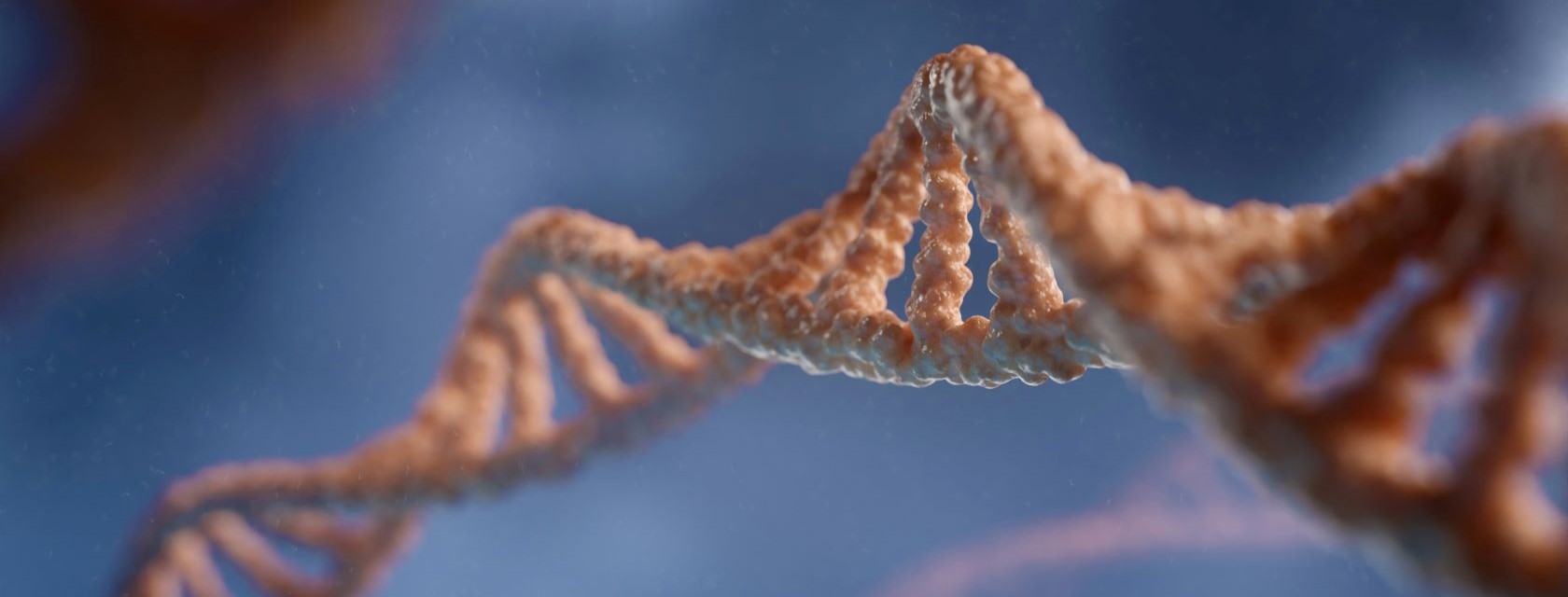A philosophy professor at the University of Guelph is leading a team of biologists to examine a theory that might change the way we view parts of our genetic makeup.
Dr. Stefan Linquist, professor in the Department of Philosophy, College of Arts, will receive $836,711 from the John Templeton Foundation to investigate the functions of transposable elements (TEs), or “jumping genes,” and their relationship to the organisms they’re found within, including us.
“Being a philosopher and the lead investigator on a study about molecular biology – it’s not something you see every day,” says Linquist. “But philosophy is about asking big questions to gain a better understanding of the world, and there are some big puzzles in the genome that have yet to be solved. I think one of them is this concept of function as it relates to our DNA.”
In this project, Linquist’s big question asks us to look at these elements from an ecological perspective.
What if TEs, instead of functioning for the organisms they’re found within, are acting out of their own biological self-interest? What if they’re more like organisms themselves with their own agendas?
Questioning the functional vs. junk DNA dichotomy

Linquist says that most DNA in plant and animal cells consists of TEs, and in humans, they make up between 40 and 60 per cent of our genome. But their significance to us has been the subject of a longstanding debate among scientists.
“For the past 50 years, scientists have operated with a fairly simplistic dichotomy, classifying all DNA as either functional or junk,” says Linquist. “To be considered functional means that a strand of DNA somehow contributes to the development or maintenance of the organism as a whole – whether that’s coding for proteins or switching other genes ‘on’ and ‘off.’ If it doesn’t do either of those things, then historically, it was considered junk.”
TEs are a type of non-coding DNA. Similarly to viruses, they use a cell’s DNA replication machinery to make copies of themselves that gradually spread throughout a genome, “jumping” from their original locations and landing elsewhere.
Depending on where they reinsert themselves, TEs can have negative effects on neighbouring genes.
At the same time, they are seen as contributors to genetic diversity and evolution by rearranging parts of our internal code and will occasionally become “domesticated” – meaning their sequences are hijacked by the rest of the genome to perform functions that benefit the organism.
All of this raises the question: how should TEs be classified?
Linquist believes the current distinction is too binary for this type of DNA and has led some to exaggerate how useful TEs may be for the organism.
“Scientists recognize that TEs are biochemically significant, and since they don’t fit neatly into the ‘junk’ bin, there is a tendency to assume their purpose is beneficial,” he says. “But they can still be performing biological actions without directly contributing to the development or maintenance of the organism.”
Ecological approach to DNA science
Linquist and his team, including Drs. Karl Cottenie and Ryan Gregory, professors in the Department of Integrative Biology, College of Biological Science; Dr. Stefan Kremer, professor in the School of Computer Science, College of Physical and Engineering Sciences; PhD graduates Drs. Tyler A. Elliott and Brent Saylor and Dr. W. Ford Doolittle, professor emeritus at Dalhousie University, are taking an ecological approach to understanding TEs.
“The science of ecology has a rich vocabulary to describe roles a species might play within a broader ecosystem,” says Linquist. “Some ecological interactions promote the survival of one species while excluding others. Some are mutualistic, in which two or more species benefit each other, and others benefit the ecosystem at large.”
According to Linquist, this provides a clue for reconceptualizing TEs. He says, with some imaginative reframing, TEs can be viewed as ecological agents whose activities can affect the structure, function and dynamics of their environment. It could also explain why TEs from different “families” will reinsert themselves in specific regions of a chromosome as if they are selective about where they land, and why their population numbers vary among genomes.
The project team will analyze genomic data using ecological tools, construct computer simulations of TE behaviour and explore the conceptual foundations of genomics and ecology, outlining what it means to think of the genome as a literal ecosystem and the implications for biomedical science.
Linquist thinks this approach could revolutionize the study of genomics by creating new categories for classifying DNA and paving the way for more research in this area.
“The work that Dr. Linquist and his team are doing has the potential to break even more ground in an emerging, multidisciplinary field,” says Dr. Shayan Sharif, interim vice-president, research and innovation. “Research excellence is about pushing boundaries and expanding the frontiers of our knowledge. This funding from the John Templeton Foundation will propel this exploration forward and support Dr. Linquist and his team in their pursuit of new discoveries.”
This project/publication was made possible through the support of Grant 63456 from the John Templeton Foundation. The opinions expressed in this publication are those of the author(s) and do not necessarily reflect the views of the John Templeton Foundation.
